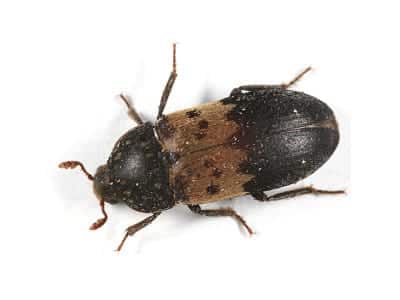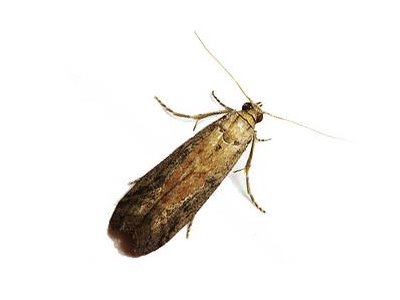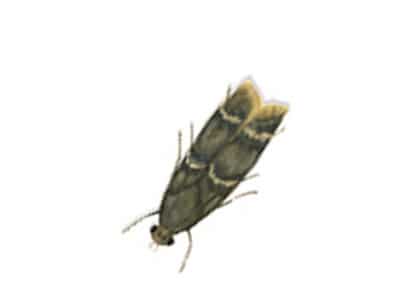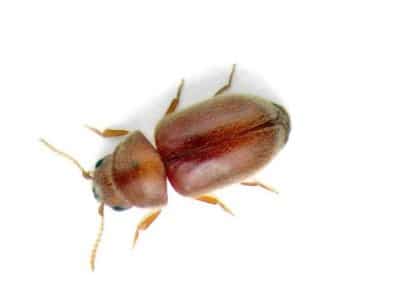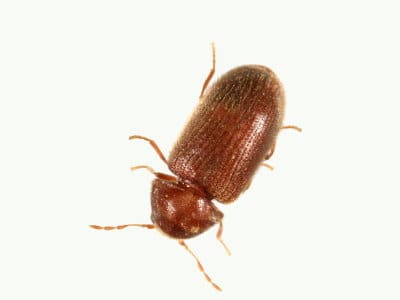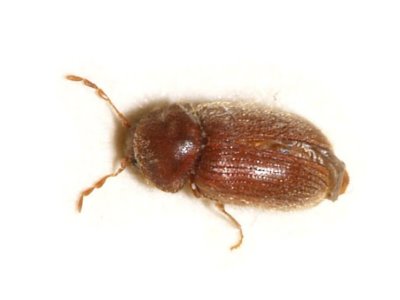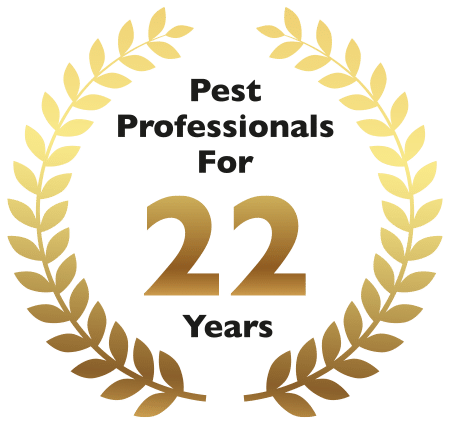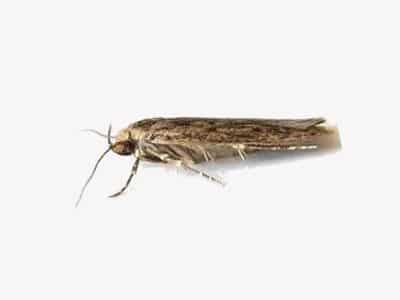About Warehouse Moths
The Warehouse Moth (Ephestia elutella) is a common indoor pest in the UK. This moth species is also known as the Cacao Moth and the Tobacco Moth. As these names suggest, these brownish-grey moths are usually found in warehouses, particularly those were food or plant-based products are stored. They feed on a variety of plant-based materials such as grains, cereals and dried fruits. As such, they can be a major pest in the food industry.
Warehouse moth infestations often occur due to contaminated incoming products, improper storage of high risk items and poor hygiene. Risk of infestation can be reduced by controlling temperature, humidity and ongoing monitoring in high risk areas to detect activity early.
Controlling warehouse moth activity is essential to the preservation of food quality. Infestations will lead to the contamination of spoilage of food, making it unsuitable for human consumption and resulting in loss.
Pest Solutions are here to help with warehouse moth problems. Get the details of your local Pest Solutions Branch here or call our national advice line on 0800 027 2555 to arrange a FREE survey or a service visit.
Identifying Warehouse Moths
Adult warehouse moths measure around 7mm-9 mm in length with a wingspan of approx. 12mm-18mm. The adults are a brownish-grey colour with dark, mottled markings on the wings. These relatively small moths have a distinctive hooked shaped at the tip of their wings.
Warehouse moth eggs are small, translucent and oval shaped. Larvae are cream coloured with a distinctive brown head, ranging in size from 10mm-20mm depending on age of the larvae and environmental conditions. Larvae spin a webbing of silk used to create a protective environment while it feeds and grows.
Signs of Warehouse Moth Infestation
A tell-tale sign of infestation by warehouse moths is presence of the adult moths fluttering around within food storage areas. However, in larger warehouses with high ceilings, this can sometimes go undetected. As such, monitors containing pheromone lures are effective to detect infestation by warehouse moths.
You may also notice larval stages or eggs within or around food products or spillages. Other signs include silk webbing or faecal matter within stored food products.
Warehouse Moth Biology & Lifecycle
The warehouse moth undergoes a complete metamorphosis consisting of four stages: Egg, Larva, Pupa and Adult.
Adult female moths will lay small, translucent, oval shaped eggs on or near by a food source. A female warehouse moth can lay hundreds of eggs in her lifetime. Eggs hatch and give rise to larvae, small cream-coloured caterpillars with a dark head. The larval stage causes the most damage to food products.
Once mature, larvae will pupate, normally in dark places like crack and crevices or sheltered areas near to the food source. From here, the nocturnal adult moths will emerge to breed and continue the cycle of infestation.
The entire lifecycle of warehouse moths can be completed in a relatively short time under optimum conditions. With potential to reproduce rapidly in warm, humid conditions, these moths can go through multiple generations in a single year which makes them a persistent pest indoors, particularly in food storage and food processing facilities.
Warehouse Moth Behaviour
The warehouse moth is nocturnal in nature, meaning these insects are primarily active at night. This is another reason why it can be difficult to detect these pests during the day, although they can often be seen flying around lights when its dark.
The attraction to light is useful as we can use this to monitor for presence of these moths and to check levels of activity. EFK units or light traps can be effective indicators of warehouse moth activity.
As voracious feeders, the larval stages are the most destructive stage of the warehouse moth. Their feeding can cause damage and contamination to food products, favouring a variety of plant based material such as grains, cereals, dried fruits and other dry goods. Webbing spun by larvae also creates mess within stored food products.
Risk of Warehouse Moth Infestation
Places such as food storage and processing areas are most at risk of infestation by warehouse moths. These insects can contaminate food sources through the insects themselves, as well as faecal matter and webbing. This can pose a risk to public health if consumed by humans as it can result in illness.
Infested products should be disposed of immediately to prevent the infestation spreading. If not, and these are consumed by people, it can make them ill. Medium to large infestations can cause damage to a significant amount of stored food products, which has negative financial impact through loss. Preventing food waste is also important for the environment.
Significance of Controlling Warehouse Moth
Control of warehouse moths is important to protect food quality and safety, to prevent food spoilage and economic loss.
By disposing of infested food products, risk to human health is eliminated however, if large amounts of food product must be disposed of, this is bad for business and the environment.
Controlling Warehouse Moth Infestations
An integrated pest management approach is required when dealing with warehouse moths. In any case, prevention is better than having to deal with an infestation. Pheromone traps are good tools for early identification of moth activity.
Food storage areas and containers should be regularly cleaned and inspected to evidence of moth activity. If activity is discovered, effected products should be removed quickly. Effected areas and adjacent areas should be cleaned and checked to make sure there are no life stages of moths present. Food products should be stored in appropriate sealed containers to reduce the risk of ingress by insects.
Insecticide can be considered as a last resort but will not be completely effective unless used as part of an integrated pest management approach also involving good hygiene practices.
In most cases, insecticide application will be targeted at the larvae and adult moths to ensure effective control of all life stages. Several insecticide applications may be required depending on severity of infestation. Monitoring with use of pheromone lunes is also an essential part of a treatment plan.
Each situation is different. A qualified pest management professional will be able to establish the best course of treatment in each case.
Preventing Warehouse Moth Infestations
To prevent infestation by warehouse moths, food storage, hygiene practices and environmental factors are important.
Storing high risk foods in suitable, sealed containers will prevent access by stored product insects, which reduces the risk of infestation and contamination. Storing food products at the correct temperature and implementing humidity controls will also reduce the risk of infestation by warehoused moths.
Good cleaning practices including regular, detailed deep cleaning of storage containers and storage areas will also aid in preventing infestation by these insects.
Removal of harbourage points i.e. hiding places such as cracks and cervices can also help to prevent warehouse moth issues.
DIY Pest Control
At home, if you discover these moths flying around then it often means that there is in infestation present. Check all stored food products for signs of infestation and promptly dispose of contaminated materials. Once this has been done, storage containers and storage areas such as cupboards or pantries should be cleaned thoroughly. This can be effective if the infestation is not widespread and has been discovered early enough.
Risk of infestation can be reduced by good hygiene and proper storage of foods in sealed containers.
When to Call a Professional for moth control
For larger infestations, or in commercial settings, professional help is usually required to bring moth infestations under control. At Pest Solutions, we have seen the lot, from common carpet and clothes moths to Indian meal moths, tropical warehouse moths, Mediterranean flour moths and so much more. As they frequently invest foods such as grain, cereals and cocoa beans, these are one of the more serious pests commonly dealt with in the food manufacturing industry and should be dealt with immediately.
If you have spotted signs of pest activity in your food storage areas, but haven’t physically seen the pest itself, our expert team will be able to identify it for you. Moth, beetle, ants, or rodents, whatever size, shape or species of pest you are facing, Pest Solutions are here to help.
A qualified pest management professional will use their expertise to select the best tools for the job to bring the infestation under control whether that’s fumigation to eliminate moth larvae and eggs or pest proofing to prevent future issues.
Call Pest Solutions to Get Rid of Moths
Pest Solutions have local Branches across Scotland, England, Wales and Northern Ireland. Our expert local techs are at hand to attend today. Call now to get an experienced Pest technician visit and get that Pest problem under control swiftly. From m
Get the details of your local Pest Solutions Branch here or call our national advice line on 0800 027 2555 to arrange a FREE survey or a service visit.
Find out more about how to get rid of moths
